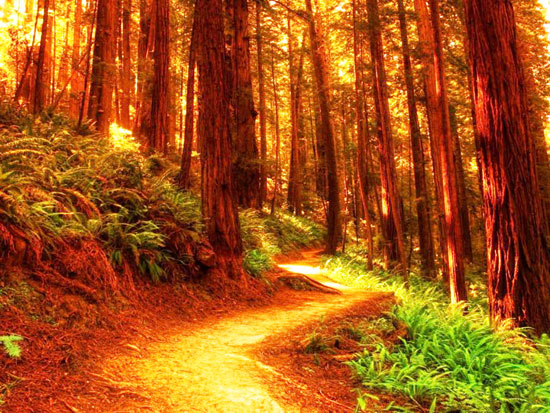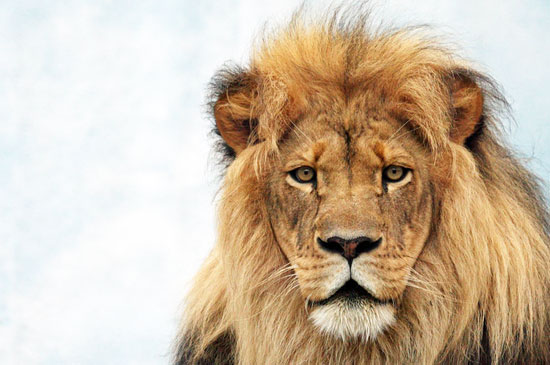The Three Stages Of Spiritual Transformation
By Sofo Archon

Life is a journey we all take. On this journey, there are as many paths as travelers. But everyone is moving toward the same destination – that of spiritual enlightenment.
What determines how fast we progress and ultimately reach our destination is the lessons we learn from our experiences, as well as how well we apply them in our everyday lives.
As we learn and become wiser, we go through various stages of spiritual transformation, which, according to Friedrich Nietzsche, could be boiled down to just three main ones.
I consider myself to be extremely lucky, and one of the reasons why I do so is that at the age of 17 I had the chance to come across one of the greatest books ever written in human history.
“Which one?” I can hear you asking. Thus Spoke Zarathustra. Just mentioning its name, I can feel shivers running down my spine. Such a powerful effect it has had on my life.
Written by Friedrich Nietzsche, this book is a difficult read, filled with allegories and fragmented thoughts. Yet the insights contained in it are so profound that even now, nearly 15 years since reading it, I still carry them like a treasure in my mind.
One of the greatest ideas expressed in Thus Spoke Zarathustra is that of The Three Metamorphoses of the Spirit. According to Nietzsche, as humans grow and mature, they naturally go through three stages of spiritual transformation.
Most of them only make it to the first one where they are stuck for life, some are able to progress to the second, while only a few manage to pass through to the third. However, it’s only when the third and final transformation has been reached that one can realize his or her full potential and make the most out of life.
Now you must be wondering: which are those three spiritual transformations?
Well, let’s find out!
Transformation 1: The Camel
The first transformation of the human spirit is that of becoming a camel. The camel is a symbol that represents obedience and tolerance. Just like most people, the camel is living in harsh conditions that have been imposed upon it and which it has to endure.
Think of how a camel lives: it is day in and day out being loaded with heavy weights that it has to carry through the hot dessert merely for the sake of satisfying the wishes of its masters.
Now think of how most people live: they are constantly doing things they don’t enjoy doing just so as to satisfy the expectations of others, such as parents, teachers and employers, but they are sacrificing themselves in the process.
The camel is a carrier, a collector of burdens. It hasn’t learned to say no. Whatever it’s told to do, it does without objection. It kneels down and lets others place burdens upon it without offering the least resistance.
Doesn’t that sound similar to the way the majority of people behave? They follow rules and orders, doing whatever authority figures tell them to do, even if that is against their well-being. They are afraid to disobey and never gather the courage to go against the sick normalcy that society has forced them to fit in.
The camel has accepted hardship as its fate. In its eyes, life is a drudgery and nothing can be done to alter it. Yet the camel isn’t intimidated by discomfort or discouraged by the challenges life presents it on its way. On the contrary, it is ready to face head-on any difficulty it comes across and is willing to do anything it takes to go through it.
That’s because the camel feels a sense of duty to carry out the tasks that were given to it, and finds egoistic gratification in demonstrating that it can successfully do so.
So many of us do all sorts of things because we feel that we have to, without ever stopping for a moment to question our behavior.
We’ve been conditioned to believe that it’s our duty to live in a certain way, and that if we don’t then we aren’t good enough to be accepted by society. So we try to do whatever it takes to prove ourselves to others, and by achieving that we (temporarily) feel better about ourselves.
As it ages, the camel finds that the weights it is carrying on its back are growing heavier and heavier, and at some point starts to question its way of living. Despite its great achievements, the camel feels empty of joy and purpose, and it deep down knows that if it continues existing this way, it will be filled with bitterness and regrets for having experienced such a painful and pointless life.
The camel finds itself limited by the duties and obligations that have been placed upon it. If it continues carrying them for much longer, their weight might break its spirit. If, however, it chooses to rebel against them, it can pass through the next stage of spiritual transformation – that of becoming a lion – and free itself from the burdens that have been keeping it down.
Transformation 2: The Lion
Realizing that it’s not free, the camel decides to break the shackles of social conditioning in an effort to liberate itself. By taking this decision, it transforms into a lion.
Just like the camel, we all desire freedom. Yet we’re confined within unconscious ideological cages that were handed to us from tradition, and unless we realize their existence, and take action to get rid of them, we’ll always remain prisoners of our own limiting beliefs.
The then camel, now lion, questions everything it knows, and soon finds out that its long-held values and morals are nothing but the result of years of brainwashing, as well as that ultimately there’s no universal truth or morality.
As a result, it rejects all beliefs and chooses to dedicate its life to fighting against the structures that have been restricting its freedom. Only once we dare to doubt and scrutinize our beliefs, can we start our quest for truth. If we do so, however, we’re soon bound to discover that what was offered to us as truth by tradition isn’t quite the truth.

Consequently, this can lead us to experience immense anger for having been deceived since the very moment we were born, and, in turn, our anger can lead us to fight against anyone that has been trying to persuade us into believing untruths.
The lion symbolizes disillusionment, courage, and anger. Being the king of the beasts, it follows no one’s rules; rather, it creates its own and imposes them on the world. It doesn’t bow down to others or take orders – instead, it stands proud and follows its inner voice. In essence, the lion is a rebel – it rebels against the duties and moral codes that were forced upon it.
Yet, although it has renounced external values and obligations, it still hasn’t found true freedom. Because of its reactive nature, the lion’s freedom is negative, for its existence depends on battling tradition. The lion is totally focused on destroying existing structures, and not on creating new ones. In other words, it is living against something else, and not for itself.
This is exactly how people usually react under the influence of anger: instead of searching to find a solution to their problems, they are fighting against what created them.
For example, many fight against the established system of society, but they don’t seem to comprehend that, although fighting might be to some extent necessary for the progress of our civilization, it isn’t going to bring any positive change on its own unless it is coupled with the creation of a new system that will render the old obsolete.
Hence, they ultimately achieve nothing other than possibly causing further harm to themselves and the world.
Looked at this way, the lion is still, in a sense, a prisoner – a prisoner of its own mind. To escape this mental prison, it needs to let go of its past and start living fresh by creating a new way of life. For this to happen, however, it has to go through the next and last stage of spiritual transformation – that of becoming a child.
Transformation 3: The Child
Spiritual masters from both the West and East point out again and again the importance of reconnecting with our “inner child.” Why? Because, as a symbol, the child represents all the good qualities that reside within each person, such as innocence, playfulness and creativity.
As we’ve seen, the lion has tremendous power to destroy, but it’s unable to create. It is stuck to its past – hence, it can’t move forward and make a new beginning. However, once it transforms into a child, it can at last create its life new by making up its own values, meaning and purpose.
The child has achieved spiritual liberation from the unconscious forces that were keeping it tied to a fixed pattern of thought and behavior. Unlike the lion, the child isn’t emotionally reacting based on what happened in the past – instead, it mindfully responds to life according to what’s happening in the moment.
Thus, the child can shift its focus from destroying the old structures to creating new, better ones that will actually allow humanity to enter a brighter future.
To the child, life is neither a drudgery nor a struggle; it is a pure celebration, and the child immerses itself totally in it. It finds life so precious that it doesn’t want to waste a single moment. Whatever the child does, it does it with its whole heart. Not because of external reward or validation, but simply because it finds great joy in doing so.
And its joy is contagious – anyone who comes close to the child can experience it. Therefore, just by its innocent and playful presence, the child spreads peace and happiness to the world.
By letting go of the emotional and mental constraints of our past, we can come in touch with our inner child, and thus reconnect with our creative nature. Then, we’ll be able to build a new path of life that will serve our freedom and well-being.
In addition, we’ll be able to look at the world with fresh eyes and see all the beauty that it has to offer. As a result, we’ll want to stop fighting against it, and instead we’ll start using our energy to set up systems that will enable us to live in harmony with it.
When we develop a child-like mind, our spiritual journey will be completed. We started the journey as children, and we can reach to the end of it only as “children” again. But first we need to come back to the source of our being and rediscover who we truly are.
Or, to put it differently, we need to go through a new birth – a spiritual birth. Once we do so, we won’t be bothered by our past hurts anymore. On the contrary, we’ll feel cheerful and content, wearing a big smile on our face that will radiate joy all around us.
yogaesoteric
January 16, 2019
